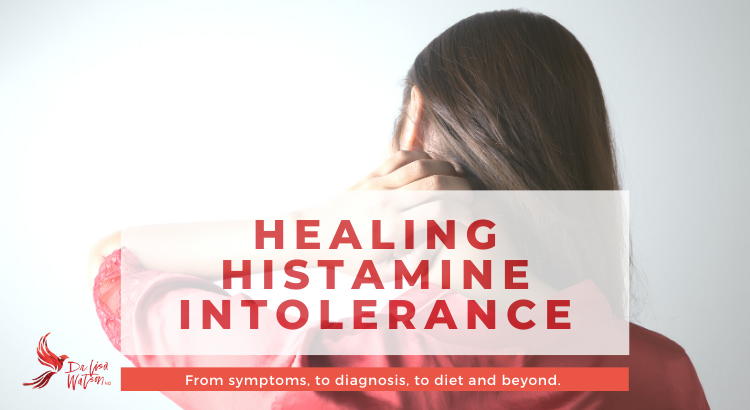
WTF is Histamine Intolerance?
Medicine has recognized issues of histamine intolerance for over 60 years, but only recently is this complicated issue being discussed openly in medical journals and online.
Histamine intolerance occurs when you either have too much histamine, usually from ingesting it in foods, or you can’t break it down, due to issues with your diamine oxidase (DAO) enzyme.
Histamine is a molecule we usually associate with an allergic reaction. Histamine is the star player in hives, itchy eyes, swelling throat, and runny nose that we associate with allergies. Interestingly histamine is also involved in brain function, triggering stomach acid production, and supporting healing after injuries.
How Do I Know if I Have Histamine Intolerance?
Here in lies the problem. It can be VERY hard to recognize a histamine intolerance, and many people are not being appropriately diagnosed. This is mostly because the symptoms of a histamine intolerance look so much like many other conditions. Many doctors are starting to consider histamine intolerance for patients with complex symptoms that aren’t responding appropriately to other treatments.
For most people with histamine intolerance they experience multiple symptoms in different areas of their bodies, further complicating the process of recognizing histamine intolerance. Add to that the hormonal aspects, the impact medications and digestive health can have, and you have a lot of people suffering unnecessarily.
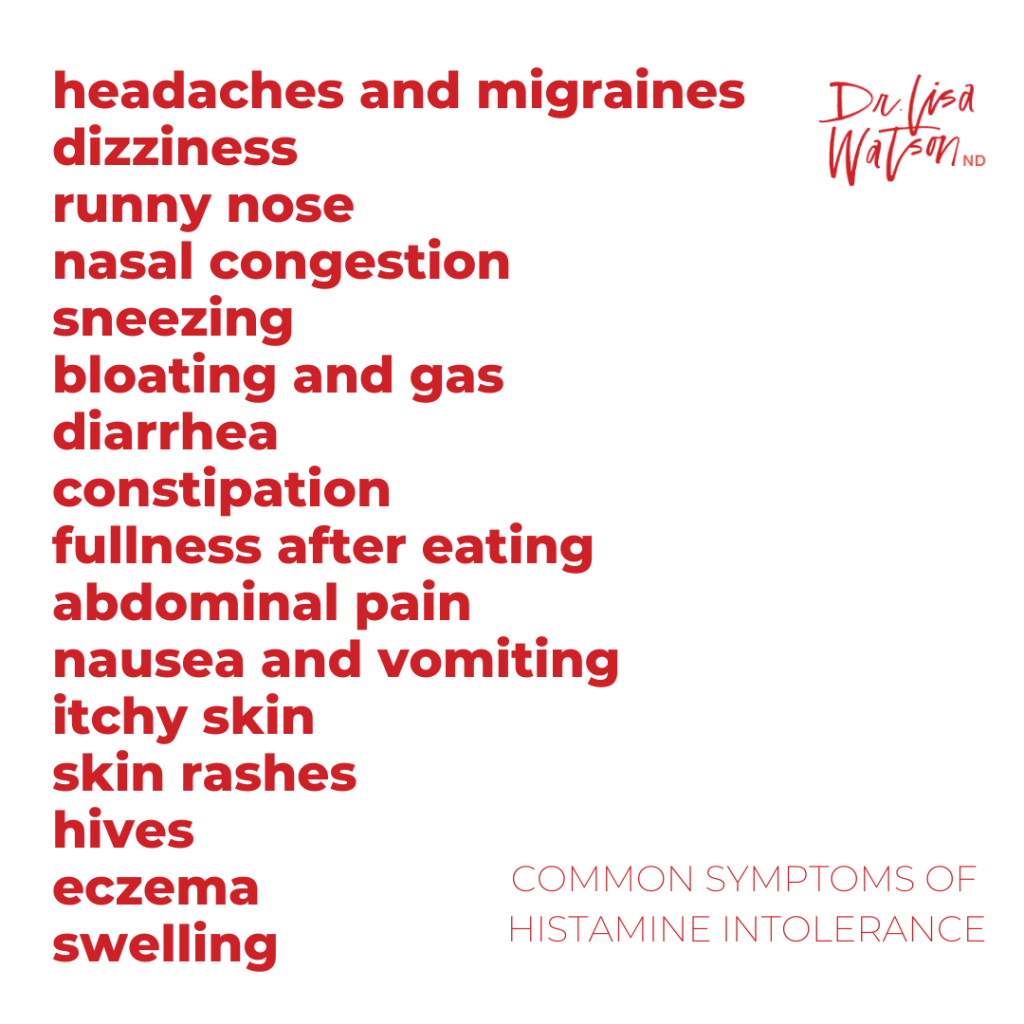
Diagnosing Histamine Intolerance
There are four key ways to diagnose histamine intolerance.
- Rule out all other conditions. This is a necessary step. We need to be sure the symptoms aren’t due to medication use or allergies that could be treated appropriately to minimize conditions.
- Consider a histamine-50 test. This is similar to a skin prick test for allergies, but rather than looking at the swelling (“wheal”) after 20 minutes, it is done after 50 minutes. For people who are unable to breakdown the histamine the wheal will still be present after this longer time. This test is used frequently in research, but not as often in practice unfortunately.
- Follow a Low Histamine Diet for 30 days and see how your symptoms respond. This is key for most people with histamine intolerance, and the main way most people are diagnosed.
- Use a DAO enzyme for 30 days and monitor your symptoms. This is often combined or used after the Low Histamine Diet (as that diet can be a bitch to maintain long term.)
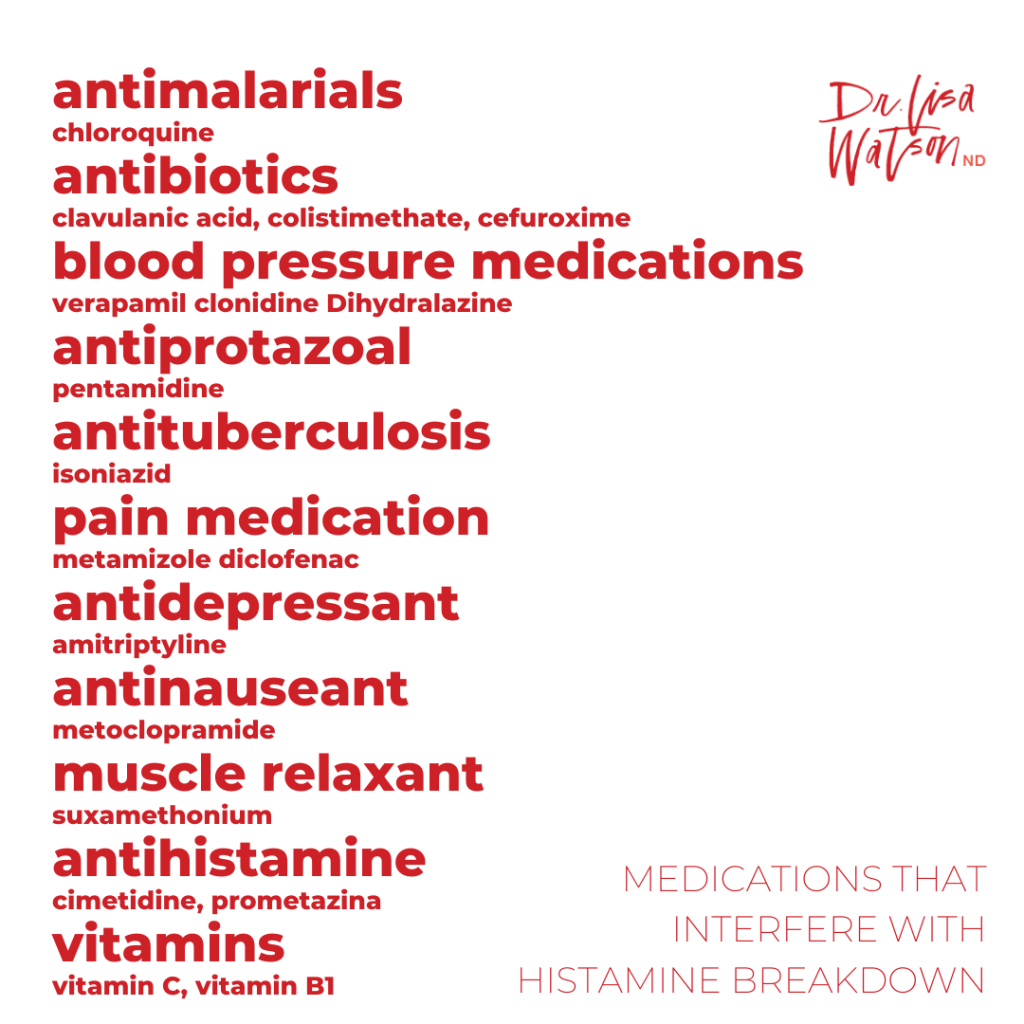
Low Histamine Diet
There are a plethora of foods that contain histamine. It is naturally produced by aging or decaying of food (along with a nasty little compound called cadaverine – gross.) However, some foods are naturally higher in histamine and can be restricted to reduce the symptoms of histamine intolerance.
High Histamine Foods
- Alcohol, kombucha, and other fermented beverages
- Fermented foods and dairy products such as yogurt, aged cheeses, kimchi, kefir, pickles, olives, and sauerkraut
- Vinegar
- Dried fruits
- Avocado
- Eggplant
- Spinach
- Processed or smoked meats
- Shellfish
We also need to avoid foods that trigger our bodies to release histamine.
Food Triggers of Histamine Release
- Alcohol
- Banana
- Tomato
- Wheat germ
- Beans, including chickpeas and soybeans
- Papaya
- Chocolate
- Citrus
- Nuts, especially walnuts and cashews
- Peanuts
- Food dyes and additives
And, as if that wasn’t enough, there are also foods that block our ability to produce DAO.
- Alcohol
- Black, green, and mate teas
- Energy drinks
- Raw egg whites, found in mayonnaise and other sauces
Foods to Enjoy
I know, a low histamine diet seems restrictive. But keep in mind there are lots of foods you can continue to enjoy.
- Fresh caught fish
- Non-aged meats, including flash frozen meats
- Non-citrus fruits
- Eggs
- Butter and non-aged cheeses, like cream cheese and fresh mozzarella
- Gluten free grains, like quinoa and rice
- Coconut milk
- Almond milk
- Fresh vegetables (noting the exceptions above)
- Leafy green vegetables (except spinach)
- Olive oil and other healthy fats
Further Support for Healing Histamine Intolerance
Gut healing is essential for many people with histamine intolerance. Supplying adequate nutrients to support gut health, as well as to reduce the build up of histamine is also beneficial. Some of the key nutrients include:
Vitamin B6 – supports production of DAO enzymes
Copper – necessary for production of DAO. May be able to increase blood
DAO levels slightly.
Magnesium – reduces the immune system response in allergic type conditions, similar to histamine intolerance.
Manganese – enhances DAO activity
Zinc – helps reduce inflammation in the gut and supports DAO action
For some people the use of a DAO enzyme can also be helpful. However, I suggest starting with the diet, and using the enzyme after you have begun to experience how powerful dietary modifications can be in improving your overall health and reducing your symptoms.
Need more support? I’ve got you. Dealing with a major health condition is not a solo endeavour! Build your team of qualified health care professionals around you, to support you and guide you as you navigate through this. I’m here to help.
Selected References
Comas-Basté O, Sànchez-Pérez S, et al. Histamine Intolerance: The current state of the art. Biomolecules 2020, 10(8):1181.
García-Martín E., Ayuso P., Martínez C., Agúndez J.A.G. Improved analytical sensitivity reveals the occurrence of gender-related variability in diamine oxidase enzyme activity in healthy individuals. Clin. Biochem. 2007;40:1339–1341
Hamada Y., Shinohara Y., Yano M., Yamamoto M., Yoshio M., Satake K., Toda A., Hirai M., Usami M. Effect of the menstrual cycle on serum diamine oxidase levels in healthy women. Clin. Biochem. 2013;46:99–102
Maintz L, Novak N. Histamine and histamine intolerance. Am J Clin Nutr. 2007;85(5):1185-96
Schnedl WJ, Lackner S, et al. Evaulation of symptoms and symptom combinations in histamine intolerance. Intest Res 2019 Jul;17(3):427-433.







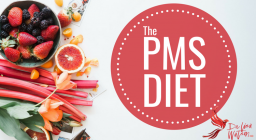
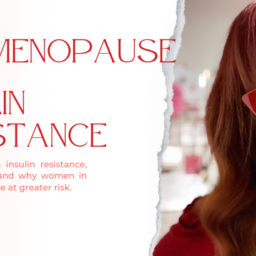

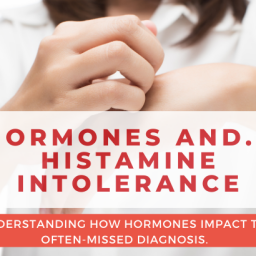
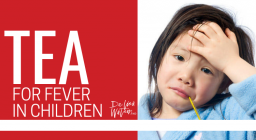

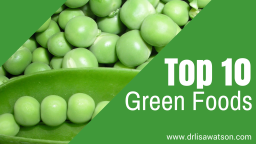
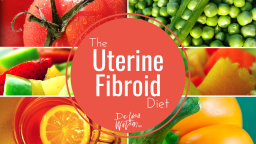
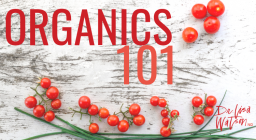
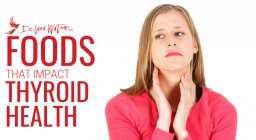
[…] 0 By Lisa Watson Food Medicine Functional Medicine Hormone […]